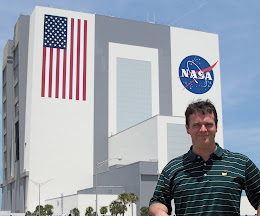CAPE CANAVERAL, Fla. -- The U.S. Air Force unmanned scientific and military research space shuttle safely returned to America's Space Coast on Sunday completing 718 days in orbit.
The fourth flight of the fully automated shuttle began its deorbit early Sunday, and reentered the Earth's atmosphere about 25 minutes prior to the 8:00 a.m. EDT landing at the Kennedy Space Center's Shuttle Landing Facility.
"The landing of OTV-4 marks another success for the X-37B program and the nation," Lt. Col. Ron Fehlen, X-37B program manager, said. "This mission once again set an on-orbit endurance record and marks the vehicle's first landing in the state of Florida. We are incredibly pleased with the performance of the space vehicle and are excited about the data gathered to support the scientific and space communities."
Sunday's landing marked the X-37B's first return from space to land at the Florida Spaceport, and it will not be the last. The X-37B manufacture Boeing is renting the space center's Orbiter Processing Facility bay 1 to off-load experiments, refurbish the craft, and prepare it for relaunch from the Cape. Bay 1 was used for over three decades to service NASA's fleet of space shuttle's.
Once the command to return to Earth is given by the Air Force, the X-37B automatically descends from low earth orbit, reenters, and flies through the atmosphere to land on a planned runway. There is no one in a control room with a joystick flying it.
The program's fourth test flight into future robotic space planes began with its launch a top a United Launch Alliance Atlas V rocket in May 2015 from Cape Canaveral AFS. The 29-foot long shuttle resembles NASA's space shuttle orbiters at first glance, however the X-37B is 80% smaller fitted with small wings, twin vertical stableizers, and a windowless avionics cockpit.
“Today marks an incredibly exciting day for the 45th Space Wing as we continue to break barriers,” Brig. Gen. Wayne Monteith, commander of 45th Space Wing said. “Our team has been preparing for this event for several years, and I am extremely proud to see our hard work and dedication culminate in today’s safe and successful landing of the X-37B.”
In 1999, NASA begun the X37 project, however the space agency handed it over to DARPA (the Defense Advanced Research Projects Agency) in September 2004. DARPA is headquartered in Arlington, Virginia.
DARPA, originally formed in 1958 as the Advanced Research Projects Agency, is an office designed to prevent technological surprises against the United States, such as the Soviets launch of Sputnik in 1957. The OTV project partnership between the military, DARPA and NASA was announced in October 2006.
This flight was performed by the second mini shuttle of the Air Force's two shuttle fleet. The Air Force office also announced on Sunday the next X-37B will launch in late-2017. That launch will see the reflight of Boeing's first flown shuttle on it's third mission.
(
Charles Atkeison reports on aerospace and technology. Follow his updates via social media @Military_Flight.)






